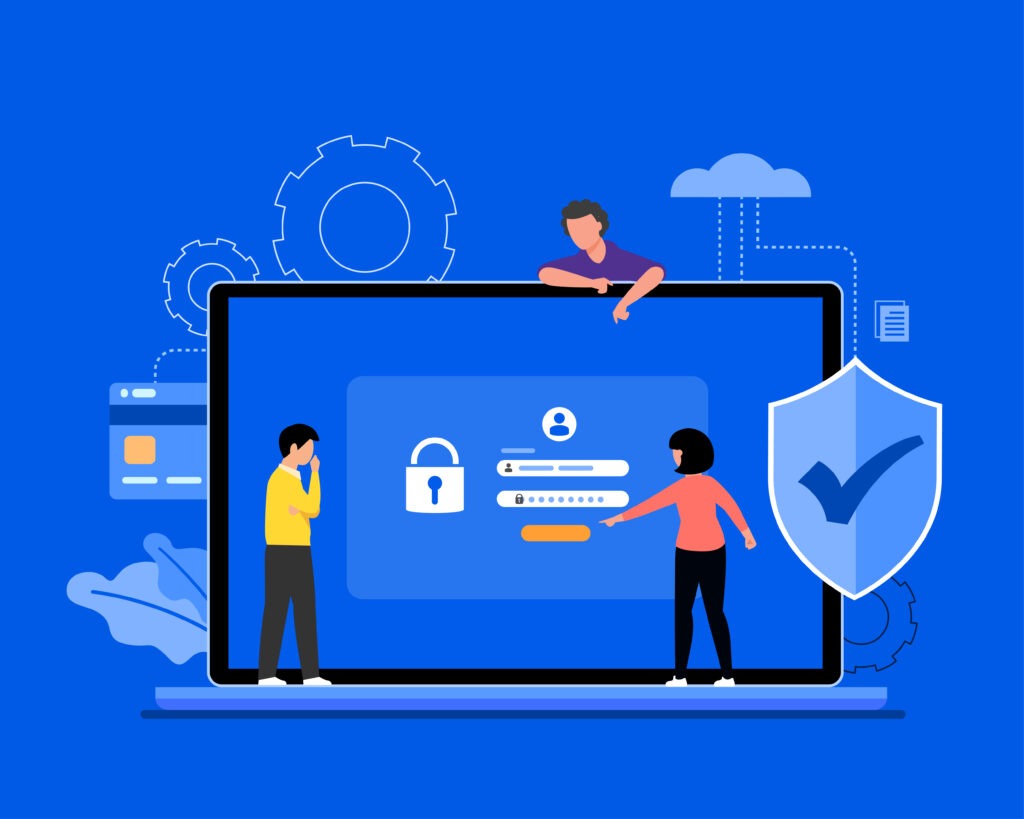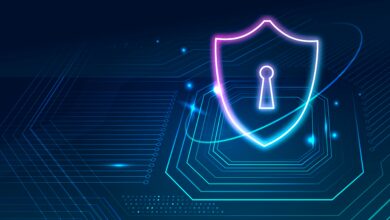What is Encryption? Definition & Types

In an age where data breaches are rampant and privacy concerns dominate headlines, encryption emerges as the linchpin of digital security. Imagine your sensitive information shielded by an unbreakable code, accessible only to those with the decryption key. This is the power and promise of encryption. Whether it’s protecting personal communications or securing financial transactions, the role of encryption in safeguarding our digital world cannot be overstated. As we delve into the intricacies of encryption, you’ll discover how this technology fortifies your data against prying eyes and cyber threats, ensuring peace of mind in an interconnected world.
Table of Contents
What Is Encryption?

Encryption is a sophisticated method of securing digital information by converting it into an unintelligible format that can only be deciphered with the correct decryption key. It acts as a virtual lock, protecting sensitive data such as financial transactions, personal communications, and corporate secrets from unauthorized access or interception. This cryptographic process ensures that even if data is intercepted, it remains unreadable and unusable to anyone without the authorized key. Encryption plays a pivotal role in cybersecurity, ensuring confidentiality and integrity across various digital platforms and communications channels. It serves as a cornerstone of modern data protection strategies, safeguarding information against cyber threats and unauthorized surveillance.
Encryption Definition
Encryption is a sophisticated cryptographic technique used to convert plain text or data into an encoded form known as ciphertext, making it unintelligible to unauthorized users. This process involves complex algorithms that manipulate data bits according to a specified encryption key, ensuring confidentiality and security during transmission or storage. Encryption ensures that sensitive information remains protected from interception or tampering, providing a vital layer of defense against cyber threats and unauthorized access. It is essential for securing digital communications, financial transactions, and confidential data across various platforms and devices in today’s interconnected world.
How Encryption Works
Encryption operates on the principle of transforming plaintext—readable data—into ciphertext—a scrambled, unreadable format—using complex algorithms and cryptographic keys. Here’s an in-depth look at how this process works:
- Algorithm Selection: The choice of algorithm depends on the desired level of security and the specific application. Common algorithms include Advanced Encryption Standard (AES), which is widely used for its robustness, and RSA, known for its capability in secure data transmission.
- Key Generation: Encryption involves the generation of encryption keys—sequences of bits used by the algorithm to encode and decode data. Keys can be symmetric, where the same key is used for both encryption and decryption, or asymmetric (public-private key pairs), where different keys are used for these operations.
- Encryption Process: During encryption, plaintext is processed through the chosen algorithm along with the encryption key. This process transforms the plaintext into ciphertext, making it unintelligible to anyone without the corresponding decryption key.
- Ciphertext Output: The output of encryption is ciphertext—a scrambled version of the original plaintext data. Ciphertext appears random and meaningless without the decryption key, ensuring that sensitive information remains confidential during transmission or storage.
- Decryption: To retrieve the original plaintext from ciphertext, the recipient uses the decryption key corresponding to the encryption key used. This process reverses the encryption algorithm, restoring the data to its original readable format.
In a world where data is the new currency, encryption is the vault that keeps it secure.
Cybersecurity Expert
Types of Encryption
1- Symmetric Encryption
Symmetric encryption is a fundamental technique in encryption where the same key is used for both encryption and decryption processes. This key, known as a encryption key or secret key, ensures that data is securely transformed from plaintext to ciphertext and back. Symmetric encryption algorithms, such as Advanced Encryption Standard (AES) and Data Encryption Standard (DES), are widely employed for their efficiency and speed in securing data. However, key distribution and management are critical challenges, as both the sender and receiver must possess and protect the same key to maintain confidentiality and integrity of the encrypted information.
2- Asymmetric Encryption
Asymmetric encryption, also known as public-key cryptography, employs a pair of keys for encryption and decryption: a public key and a private key. These keys are mathematically related but distinct, ensuring data security without requiring both parties to share the same encryption key. The public key is freely distributed and used for encryption, while the private key remains confidential and is used for decryption. This method addresses the key distribution challenge in encryption, offering enhanced security for digital signatures, secure communication channels, and data exchange over untrusted networks. Popular algorithms like RSA and Elliptic Curve Cryptography (ECC) exemplify asymmetric encryption’s versatility and robustness in safeguarding sensitive information.
3- Data Encryption Standard (DES)
Data Encryption Standard (DES), a seminal encryption algorithm developed in the 1970s, was a pioneer in digital data security. It operates on a 56-bit encryption key, applying a block cipher method to transform plaintext into ciphertext and vice versa. DES’s efficiency and effectiveness in its era made it a standard for secure communications and data protection. However, evolving computational capabilities raised concerns about its vulnerability to brute-force attacks. As a result, DES has largely been supplanted by more advanced encryption standards like Advanced Encryption Standard (AES), which offer stronger encryption keys and enhanced security features suitable for modern digital environments.
4- Triple Data Encryption Standard (3DES)
Triple Data Encryption Standard (3DES) enhances encryption security by applying the DES algorithm three times consecutively, employing 56-bit keys. This triple-layered approach significantly bolsters data protection against brute-force attacks compared to the original DES. Despite its strength, 3DES is gradually being phased out in favor of more advanced encryption standards like Advanced Encryption Standard (AES), which offer stronger encryption keys and greater efficiency in modern computing environments. Nonetheless, 3DES remains a viable option for legacy systems requiring robust encryption capabilities while transitioning to newer, more secure protocols.
5- RSA
RSA, named after its inventors Ron Rivest, Adi Shamir, and Leonard Adleman, is a cornerstone in modern encryption technology. It operates on the principle of using asymmetric encryption, where two distinct keys, public and private, are generated. The public key is widely distributed and used for encryption, while the private key remains confidential and is used for decryption. RSA’s strength lies in the difficulty of factoring large prime numbers, upon which the security of the encryption keys relies. Widely adopted for secure communications, RSA is integral to safeguarding sensitive data in digital transactions and communications across the internet.
6- Advanced Encryption Standard (AES)
Advanced Encryption Standard (AES) stands as a pinnacle in modern encryption algorithms, renowned for its robust security and efficiency. Adopted by the U.S. government and globally recognized, AES employs symmetric encryption techniques, utilizing a fixed block size of 128 bits. Its strength lies in its ability to handle large volumes of data swiftly while maintaining data integrity and confidentiality. AES operates through a series of transformation rounds that include substitution, permutation, and mixing operations, ensuring high resistance against brute-force attacks. As the cornerstone of secure data transmission and storage, AES plays a crucial role in safeguarding sensitive information across various digital platforms.
7- Encryption in the Cloud
Encryption in the Cloud has revolutionized data security paradigms, ensuring encryption algorithms safeguard sensitive information stored and transmitted over cloud networks. By employing robust encryption protocols, cloud service providers protect data from unauthorized access, breaches, and cyber threats. Techniques like end-to-end encryption and data encryption standards such as AES are integral to ensuring data integrity and confidentiality across cloud platforms. This approach not only meets stringent compliance requirements but also instills trust among users regarding the safety of their data in cloud environments. As cloud computing continues to evolve, encryption remains a cornerstone in mitigating risks and enhancing digital privacy and security measures.
8- End-to-End Encryption
End-to-End Encryption is a cryptographic method that ensures secure communication by encrypting data in such a way that only the sender and intended recipient can decipher it. This ensures that intermediaries, including service providers and hackers, cannot access the encrypted data as it travels across networks. Using complex algorithms like AES or RSA, end-to-end encryption provides robust protection against eavesdropping and tampering. It’s widely adopted in messaging apps, email services, and cloud storage systems to safeguard sensitive information from unauthorized access, thereby preserving user privacy and enhancing data security in digital communications.
The Benefits of Encryption

Privacy and Security
Privacy and Security in the digital realm are bolstered by robust encryption mechanisms that safeguard sensitive information from unauthorized access. As data breaches and cyber threats continue to evolve, encryption ensures that data is transformed into a secure format that only authorized entities can decrypt. This technology plays a crucial role in compliance with stringent privacy regulations, offering reassurance to businesses and individuals concerned about data integrity. By implementing advanced encryption standards such as AES and RSA, organizations enhance their cybersecurity posture, mitigating risks associated with data leaks and maintaining trust among stakeholders.
Regulations
Regulations governing encryption standards are crucial in today’s digital landscape. Governments and regulatory bodies worldwide impose guidelines to ensure the secure transmission and storage of sensitive data. These encryption regulations mandate specific protocols and algorithms such as AES and RSA to protect information from unauthorized access and cyber threats. Compliance with these standards not only enhances cybersecurity measures but also builds trust with customers and stakeholders by safeguarding their privacy. Organizations must navigate these regulatory frameworks adeptly to avoid penalties and maintain integrity in their operations, thereby contributing to a secure and resilient digital ecosystem.
Secure Internet Browsing
Secure Internet Browsing is paramount in the age of digital privacy concerns. Through encryption, users can browse the web with confidence, knowing that their data is protected from prying eyes and potential cyber threats. Technologies like TLS/SSL ensure that sensitive information, such as passwords and financial details, remains encrypted during transmission, thwarting interception attempts by malicious actors. Embracing encryption protocols not only safeguards personal privacy but also promotes a safer online experience, bolstering trust in e-commerce, banking, and communication platforms. As cyber threats evolve, robust encryption practices continue to play a pivotal role in maintaining a secure digital environment for users worldwide.
Encryption Keeps Sensitive Data Safe
Encryption is the stalwart guardian of sensitive data, employing intricate algorithms to transform plaintext into indecipherable ciphertext. This process ensures that only authorized parties with the corresponding decryption key can access and interpret the information, shielding it from malicious actors and unauthorized access. By securing data at rest and in transit, encryption plays a pivotal role in safeguarding digital privacy and upholding confidentiality across various platforms and industries. As cyber threats evolve, robust encryption methods continue to be essential for maintaining the integrity and security of sensitive information in today’s interconnected digital landscape.
Encryption is the shield that protects our digital lives from prying eyes and unauthorized access.
Anonymous
Conclusion
In conclusion, the evolution of encryption has revolutionized data security, offering robust solutions to safeguard sensitive information from malicious actors. From ancient ciphers to modern cryptographic algorithms like AES (Advanced Encryption Standard) and RSA, encryption has adapted to meet the challenges of a digital age. It ensures privacy and integrity across various digital platforms, from cloud storage to secure communications, playing a critical role in compliance with stringent regulations and fostering trust among users. As technology advances, the implementation of strong encryption remains paramount in mitigating cybersecurity risks and ensuring the confidentiality of sensitive data.




Your insights into email marketing spam complaint rates have been useful.
Email list segmentation enhances targeting.
Strategically grow your online presence using targeted backlinks across various niches with SEO backlink websites 2024.
Strategically grow your online presence using targeted backlinks across various niches with SEO backlink websites 2024.
Live in the USA and want to work from home? Join Trusted USA Jobs today and start earning with a trusted company. Secure your spot now!
Avoiding shortcuts in account setup maintains integrity and reliability in business operations.
Explaining how your business works builds honesty and trust with banks and customers.
If you click you will be surprised!
I really like reading through a post that can make men and women think. Also, thank you for allowing me to comment!
High valuable courses on marketing have been crucial for scaling my business online.
google adwords certification free course
Instead of buying verified Stripe accounts from third-class sellers, you should set up your own Stripe account or high-risk merchant account service. This way, you stay safe and avoid all third-party scammers. When you create your own account, you have control and can follow the rules. Buying from others can lead to problems like account bans or scams. So, be careful and choose to set up your own account to keep your business safe!
Diviashop is a highly recommended, trusted, and reputable site since 2022, delivering 100 quality service for setting up high-risk merchant accounts.
Download Free Internet marketing Courses & Money Making Courses With Free & Premium Plan. Get it Today.
simo ahava